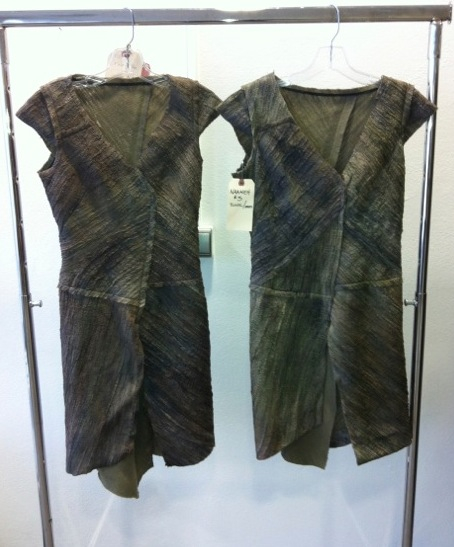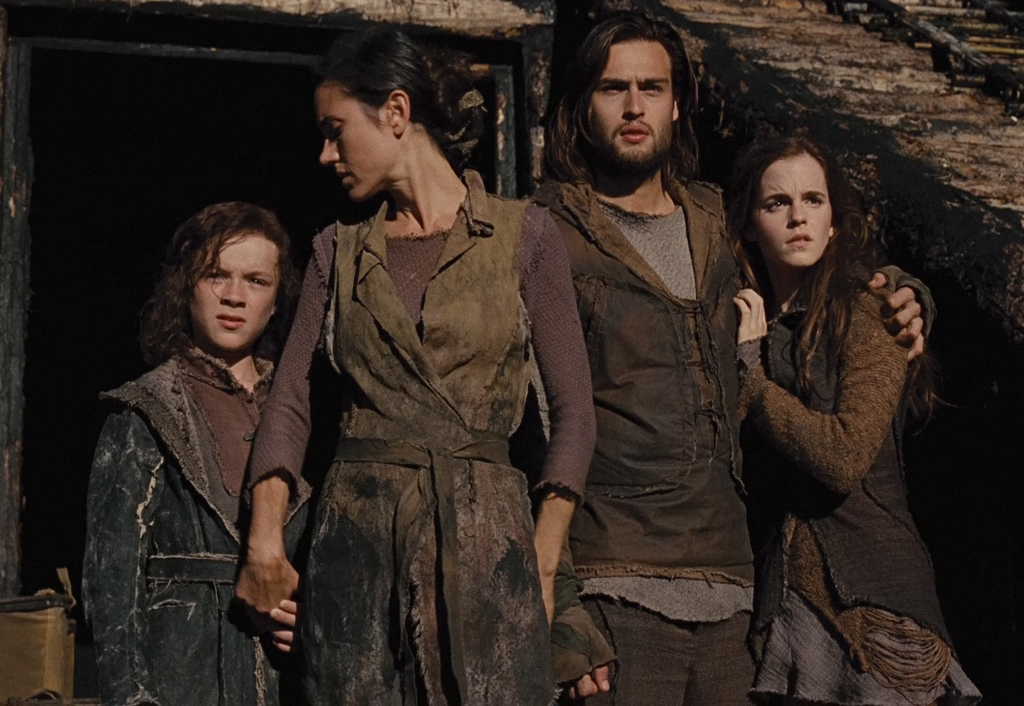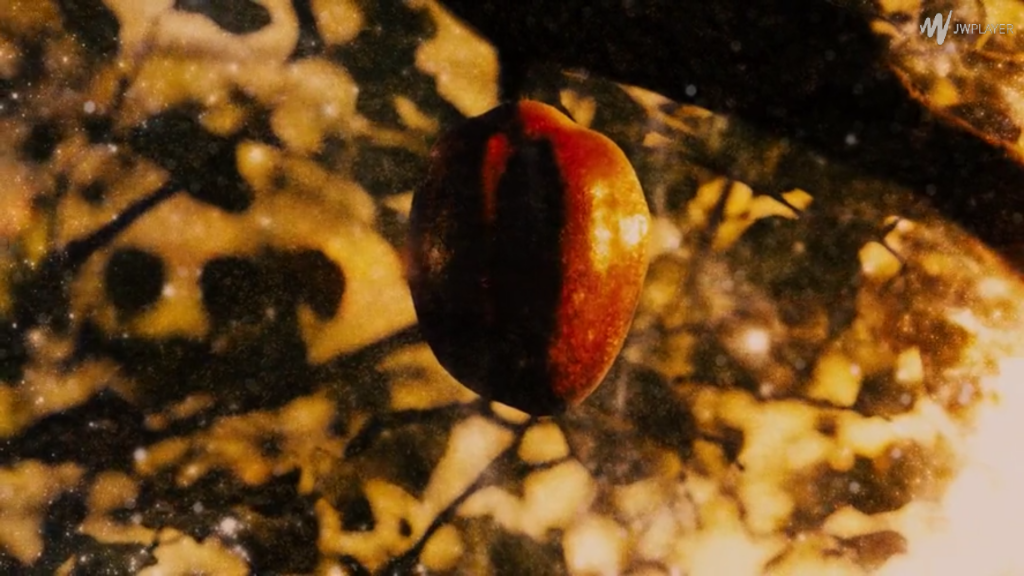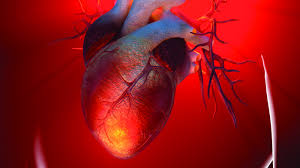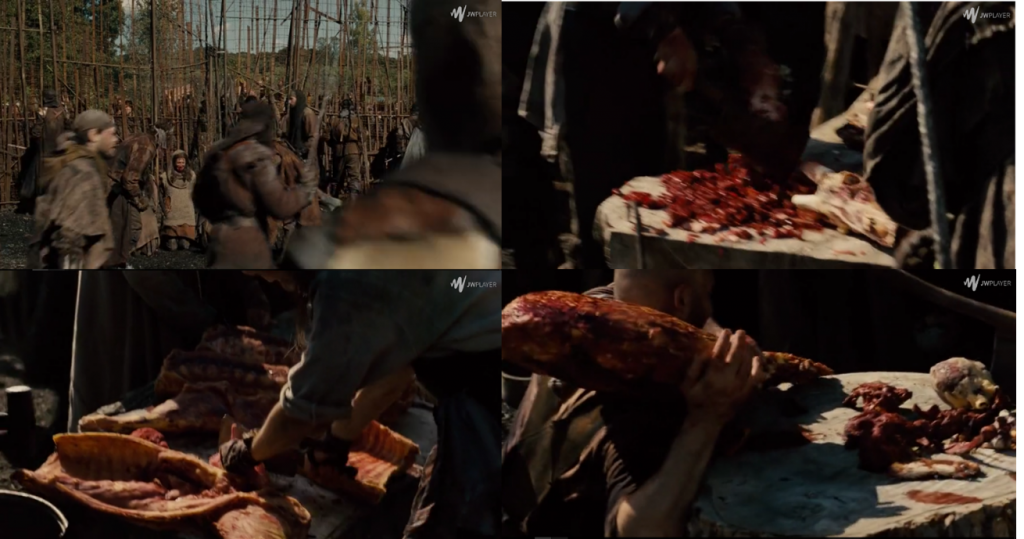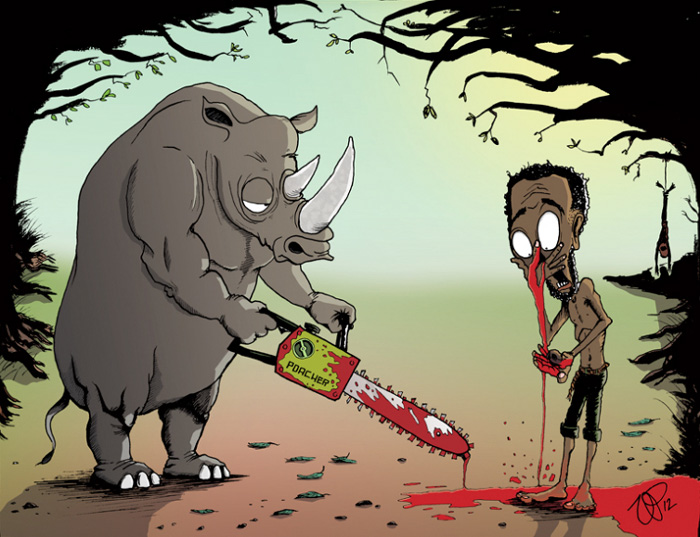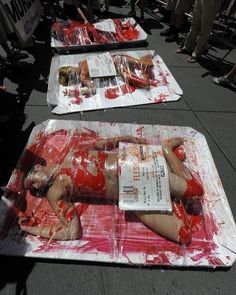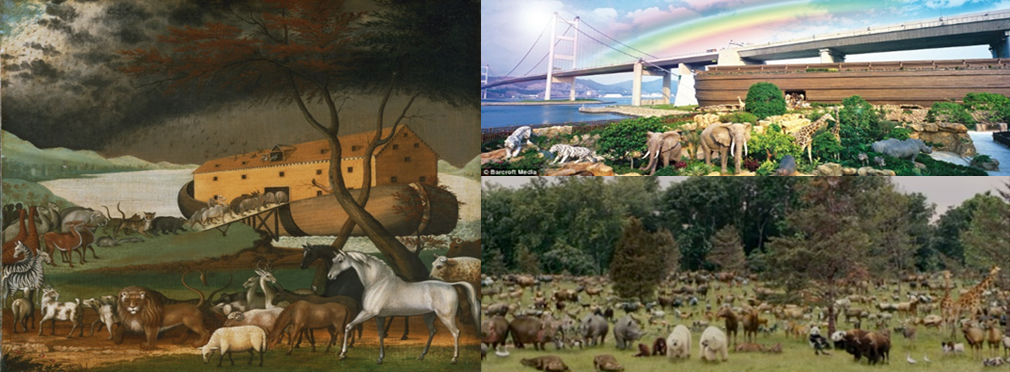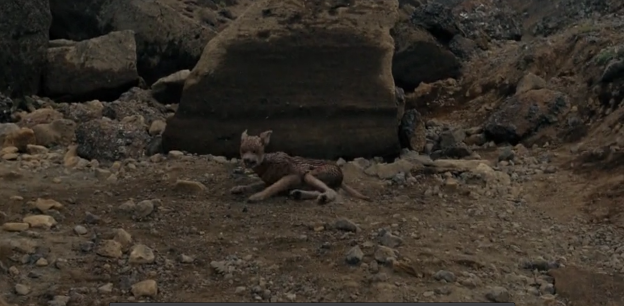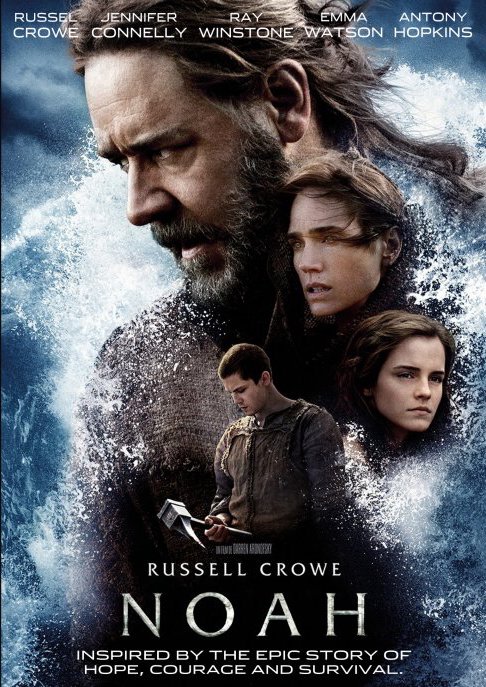God says to Noah:
Take with you seven pairs of every kind of clean animal, a male and its mate, and one pair of every kind of unclean animal, a male and its mate, and also seven pairs of every kind of bird, male and female, to keep their various kinds alive throughout the earth. (Gen. 7:2)
Darren Aronofsky’s Noah (2004) recounts one of the most famous stories in the whole bible – the Genesis Flood narrative. Dated back to the antediluvian world, Noah’s family are the only decadents of the virtuous Seth, while Cain’s sinful decadents populate the rest of the world. Noah receives God’s prophecy about a great flood that will annihilate all humanity in the world, except for his righteous family and all the animal species on earth. God grants Noah help from the Watchers and the gopher wood he needs. For most part of the film, the epic hero believes that God is determined to terminate human reproduction so that no generation would come after his family dies after the flood. Conservation of the innocent animals is therefore the greatest purpose of the ark. When Noah has fulfilled everything that God requires of him, all animals on earth are sent to the ark. Cain’s people announces war when the flood comes and tries to take Noah’s ark to save themselves. Still, only Noah’s family survives the storm. His adopted daughter Ila gives birth to two girls and Noah decides to give a second chance to humanity. They continue to breed and populate the new world. Although the film is set in a distanced past, its discussion of sin and innocence is highly applicable and accessible to us in exploring the moral way of living in the background of an industrial world.
The film production can be quite controversial when the display of a mass of animals is necessary in the narrative. During various interviews, the vegan director Aronofsky emphasized repeatedly that all the animals appearing in the film are CGI generated. He explained that using all CGI created animals is a straight-forward decision considering ethical, economical, environmental and political initiatives. ‘It would be very questionable to start taking sentient creatures and sticking them on a set… It’s kind of against the actual themes of the film.’ [1] Moreover, the film goes vegan all the way. Michael Wilkinson, the costume designer of the film, revealed that all materials are vegan ‘flax, linen, cotton, hemp, jute, all processed with no animal products and coloured using only vegetable dyes.’ [2] Even the buffet table at the film premiere is also vegan. [3] Unsurprisingly, the People for the Ethical Treatment of Animals (PETA), the largest animal rights organization in the world, applauded for Aronofsky’s vegan choices of production. [4]
Many critiques and reviews of the film had labelled it as a ‘vegan propaganda’. Telling a story that centres its narrative on animal conservation, Aronofsky established a dialogue to investigate veganist practice manipulating the close link between veganism and conservatism. He endorses animal rights using two main approaches in his representation of animals– the display of surreal spectacle of animals and the overt portrayal of animal cruelty.
The forbidden fruit is one of the most representative object of human’s original sin. Aronofsky has re-designed this seemingly cliché symbol to fit his intended theme and given the supposedly ‘vegan’ fruit a new meaning here. In the film, the scene of Eve picking the forbidden fruit appears three times throughout, making it an important motif sequence. First, the shape is noticeably designed like a heart, instead of hanging still on the tree, it expands and shrinks like pumping blood, while the branches at the back matches with the pattern of veins. Its resemblance to a beating heart is uncanny when compared to a biological illustration. The direct parallel of a living heart and the forbidden fruit results in a clearly articulated message: picking a living heart is sinful. Aronofsky argues that eating meat is immoral with an object that bears so much ethical values in the bible.
THE GROTESQUE OF ANIMAL CRUELTY
Dividing the protagonists and antagonists plainly, Aronofsky makes veganism a religious concept. The Cains’ carnivourism is indicated early in the film when Noah and his sons encounter a running mammal that is hunted by the Cains. Noah states ‘They forget, strength comes from the creator.’ Tubal- Cain does not believe in God, he violates and shows contempt to God’s idea, his arrogance and impiety have shaped him as a thorough villain in a religious story. His idea of carnivorism is utilitarian, he believes that eating meat strengthens the bodies, and demands ‘Feed only those that will fight’ when he declares war on Noah. God’s response in the film however denies these opinions by defeating the Cain’s people in the war, and Noah also overpowers him physically.
As the film proceeds, more animal cruelty is displayed within Cain’s boundary. One of the intense sequences of animal brutality shows Cain’s army attempting to train and prepare the war by consuming meat. A handheld camera tracks Tubal-Cain in a single take as he walks around the mock food factory. In just under half a minute, we can see soldiers’ merciless trade of daughters for meat while the young girls scream and cry in fear; a dirty and burry stack of bloody animal offal; the action of butchering with vigorous sound of chopping; and finally finishes with a close up that fixates on some grilled animal legs. All of the animal cruelty content is characterised by a specific set of cinematic devices, including extreme close ups and bright daylighting. The style intends to highlight the blatant brutality on animals, as if the frame coerces the audience to witness them deliberately. It resembles a more descriptive genre such as documentaries. Aronofsky exposes the animal agriculture process step by step like documentaries do, it does not evade and compromise with the comfort of watching. While audiences sympathise with the immorality of human trade, they are also revolted by the grotesque graphics of the grisly animal parts.
Animal cruelty is not the only violence that draws repulsion to carnivorism, by reversing the roles of humans and animals, human cruelty is used to prompt an attitude of disgust on the animal food production from audience. Children being caught and exchanged for meat is a situation that repeats in the film. On the other hand, the innocent girl Na-el being ambushed in an animal trap set up by the Cain’s people is a piercingly painful scene to watch. The tactic brings viewers to imagine the suffering and engages their senses. It is a common tactic seen in many recent protest of animal right activist protest.
THE SPECTACLE OF ANIMALS
Malamud observes ‘Subsequent cultural interpreters of the ark story emphasize the order, the two-by-two-ness, the implicit sense of human control (march on to the boat, out of the rain; we will save you).’ Here are a few examples of the perceived situation of animals boarding Noah’s ark:
From modern paintings, theme parks, to Hollywood blockbusters, regardless of time, locality and the types of media used, the resemblance is astonishing. Aronofsky’s Noah is no different, the film has the monotonous manner of portraying the scene, which shares the visual co-ordinates with hundreds of thousands of representations of the flood narrative in the past. In fact, the visuals are even more extravagant and imaginative than the past representations. Unlike the illustrations above, animals come to the ark at different times according to their classification and settle themselves in the designated cells, no doubt showing an account for high intelligence and obedience. This could be one of the most stunning sights of animals generated the advanced CGI technology.
A particular perspective is found in all scenes of different categories of animals boarding the ark, they are all shot in extreme wide shots. The wider sky or the land, the more animals can reside in the frame and the bigger the spectacle it could be. From the birds, the unclean animals to the mammals, all of the shots are created in an aerial shots from a long distance. The selection of animals is always an important factor to the spectacle, it shows ‘an encyclopedic cornucopia’ as Malamud identifies. Aronofsky noted ‘We chose the species and they were brought to life with different furs and colours. We didn’t want anything fully recognizable but not completely absurd either.’ There is no attempt to make the animals look realistic. Indeed, one of the ‘star animals’ of the film that features in the film looks as if it comes out from the Harry Potter franchise. [5] So that we, as audiences, are commanded to gaze at the animals gobsmacked and emerged in the majestic background music.
The wonder of animals is not limited to their beauty in the film, it extends to their animality. The animals are depicted as clean, intelligent, innocent and harmonious. There is a denial of the real challenge and hazard of cohabitation, which might cause chases, fights, hunts and even cannibalism between same species or human. The surreal and imaginative imageries of the animals no doubt instruct audience to worship their beauty, at the same time, it also distracts audiences from sensing their abhorring stench or thundering noises. Concerns of practicality such as hygiene, food, and special climatic need is irrelevant. Malamud described that in most versions of the Noah’s story, the feeding and managing of the animals are depicted ‘tossed in as a fairly trivial afterthought God reminds Noah of the human caretaker’s relationship to the other animals’ [6]
EVALUATION
How does the film as a religious epic achieve its vegan agenda? Since God is mostly absent in the film and it is emphasised that the fate of the world is in the hands of Noah, Noah’s practice of veganism is ethical rather than religious. His belief of veganism is based largely on abolitionism, which contends that all beings have the basic rights to not be treated as property of others. [7] The religious context therefore does not attribute much to the moral.
The epic genre gives filmmakers freedom to stretch the imagination of animals and insert fictional imageries without the concern of presenting actuality. Aronofsky nonetheless attempts to do both. We are delivered with a forged actuality of animal cruelty, and at the same time a highly creative portrayal of animal spectacles. Aronofsky gives a paradoxical comment on his decision of the use of CGI animals, he perceives that it makes Noah “undoubtedly a more realistic, truthful film … because we were able to create our own animal kingdom”. He is aware that creating an imaginative animal world is perplexingly more ‘realistic’ and truthful. Baker explains:
It appears that the emotion of a positive image of animals could only ever satisfy a rather selfish urge to capture and to regulate – to bring the slippery meanings of the animal image under control. It implies not only that we have a right to see animals, but that we also have a right to specify how we are to see them. [8]
This fictional epic film is not more or less useful than documentaries because the inventive representation of animals is essentially empty, it cannot render a positive reflection of human-animal relation. As we leave the cinema, our ‘sentimentality’ shaped temporarily towards animals evaporates with the unstable imagination of animals that we desire to see in the film.
[1] “Noah Director Darren Aronofsky Tells Peta Why He Filled His Ark with CGI Animals”. 2017.
[2] “Noah costume design: style and sustainability on set”. 2017.
[3] ‘Vegan Buffet Table at ‘Noah’ Party’. 2014.
[4] “Russell Crowe and Darren Aronofsky: A Dynamic Duo for Animals”. 2017.
[5] Randy Malamud. 2012. An introduction to animals and visual culture, 1st edn (Houndmills, Basingstoke, Hampshire: Palgrave Macmillan), p.18
[6] Randy Malamud. 2012. An introduction to animals and visual culture, 1st edn (Houndmills, Basingstoke, Hampshire: Palgrave Macmillan), p.15
[7] Gary L Francione. 2017. “The Six Principles of the Abolitionist Approach to Animal Rights – Animal Rights: The Abolitionist Approach”, Animal Rights: The Abolitionist Approach
[8] Steve Baker. 1993. Picturing the beast, 1st edn (Manchester: Manchester University Press), p. 194
Bibliography
“Noah costume design: style and sustainability on set”. 2017. Telegraph.co.uk http://www.telegraph.co.uk/sponsored/culture/noah-movie/10761007/noah-costume-design.html [accessed 16 January 2017]
“Noah Director Darren Aronofsky Tells Peta Why He Filled His Ark with CGI Animals”. 2017. International Business Times UK http://www.ibtimes.co.uk/noah-director-darren-aronofsky-tells-peta-why-he-filled-his-ark-cgi-animals-1441869 [accessed 16 January 2017]
“Russell Crowe and Darren Aronofsky: A Dynamic Duo for Animals”. 2017. PETA http://www.peta.org/blog/russell-crowe-darren-aronofsky-noah [accessed 16 January 2017]
Baker, Steve. 1993. Picturing the Beast, 1st edn (Manchester: Manchester University Press)
Francione, Gary L. 2017. “The Six Principles of the Abolitionist Approach to Animal Rights – Animal Rights: The Abolitionist Approach”, Animal Rights: The Abolitionist Approach http://www.abolitionistapproach.com/about/the-six-principles-of-the-abolitionist-approach-to-animal-rights/#.WHv0d_mLREZ [accessed 16 January 2017]
The Holy Bible, New Revised Standard Version: Containing the Old and New Testaments (Cambridge: Cambridge University Press, 1994)
Malamud, Randy. 2012. An introduction to animals and visual culture, 1st edn (Houndmills, Basingstoke, Hampshire: Palgrave Macmillan)
Filmography
Noah. 2014. (Hollywood: Darren Aronofsky)
